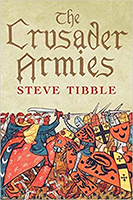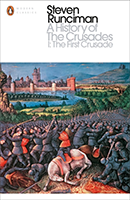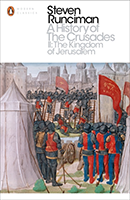
 Bibliography
Bibliography
E. Kt. Ian Drury
Provincial Marshal
Literary agent and historian
Discovering more about the historic military orders - a personal bibliography
I’ve worked in London publishing for more than 30 years, and it was Sir Walter Scott who invented a core part of my business. Two hundred years ago, his best-selling novel Ivanhoe captivated Britain, and created an enduring market for historical fiction. However, for today’s Masonic Knights Templar, he created something of an image problem. Scott’s great villain, Brian de Bois-Guilbert, is a Templar. He combines greed, lechery and heresy – mind you, he has his bad points too – and alludes to the esoteric mysteries of the order. The popular view of the Knights Templar today remains that framed by Scott, and re-packaged for modern audiences by the likes of Dan Brown, Raymond Khoury, Hollywood and HBO.
As an antidote to the fanciful nonsense propagated by Scott and his successors, I thought it might be helpful if our website included a reading list for knights who’d like to learn more about the orders we commemorate and celebrate. What follows is a personal list and it’s by no means exhaustive – I’m sure other knights will be able to point us to additional books worth studying. It’s also an evidence-based list: you will find nothing here alleging that Templars escaped to Scotland, founded Freemasonry, or were behind the Kennedy assassination. Indeed, perhaps the best place to start your review of Templar literature is Malcolm Barber’s The New Knighthood (Cambridge University Press, 1994). His last chapter reveals how the story of the Templars has been told from the dissolution of the order to Umberto Eco’s satire Foucault’s Pendulum.
I have a recent (2012) paperback edition of The New Knighthood, which itself tells you something about the rising tide of ignorance in my industry. Don’t be put off by the cover, which shows a helmet of the type invented more than a century after the Templars were suppressed. Barber’s book is an excellent one-volume account of the Templars. The apparent narrative arc of the knights, from virtuous monks to corrupt men of violence, was too obvious for mediaeval writers to ignore, whatever the facts of the matter. Thucydides may have pioneered objective history, but for most mediaeval writers, it was material for a morality story.
For a short introduction to the subject, Osprey publish a number of concise, illustrated books on the Crusades and the military orders. Popular writer Dan Jones had a recent hit with The Templars, his fast-paced romp through their history. Helen Jane Nicolson’s The Knights Templar (2001) is a short but solid account of their rise and fall, and is still available secondhand via Abebooks or similar.
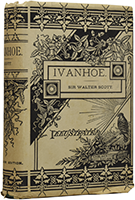


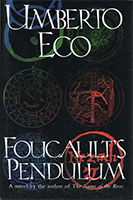



The Knights Hospitaller are less well served. English-language accounts of the Knights of St John mostly focus on the siege of Malta in 1565. Ernle Bradford’s venerable The Great Siege remains a terrific read. I haven’t read Bruce Ware Allen’s 2017 The Great Siege of Malta, but it looks worth investigating. Personally, the best depiction I’ve found is Tim Willock’s blood-soaked epic novel The Religion, which I strongly recommend. General histories of the order usually address the Order’s operations in the Holy Land, but if you think back to our Malta degree and the banners presented, there’s a Rhodes-shaped gap in the literature. In my view there’s a book to be written about the Knights’ operations from the capture of Rhodes in 1310 to their evacuation of the island in 1522. The only narrative of this period in English I have found is a chapter in Volume II of A History of the Crusades edited by Kenneth M. Setton, (University of Wisconsin Press, 1969).
The military orders can’t be studied in isolation. R.C. Smail’s Crusading Warfare 1097–1193 (Cambridge, 1972) was the standard text when I was an undergraduate, and well worth reading for a solid military history of the period.
Like all armies, those of the Templars and Hospitallers reflected the society that created them. There are many narratives of the Crusades, but Christopher Tyerman’s magnum opus, God’s War: A New History of the Crusades (Penguin 2007) is the best place to start. (I should declare an interest: Professor Tyerman, then a newly minted post-graduate, was my tutor for The Crusades.) When I was studying this in the early 1980s, Marxist history exerted a powerful influence and historians sought to ascribe any motives to the Crusaders – cynical politics, greed, racial stereotypes – anything rather than admit that religion was real and that men were ready to die in order to liberate the Holy Land from the infidel. Christopher Tyerman drew my attention to the accounts of the Fourth Crusade that accept the religious motivation of most participants, except the Venetians, who are painted as cynical Mafiosi because . . . well, they’re Italian.






One of the big changes I’ve observed in returning to this subject is that ideas that were then radical theses emerging from postgraduate studies have now become part of the mainstream. Malcolm Barber’s The Crusader States (Yale, 2014) reveals that the population of Palestine in 1099 included a substantial Christian minority – possibly more than 40%, albeit divided between different and often hostile traditions. There was no such thing as a typical Crusader army, but Steven Tibble’s superb and very readable The Crusader Armies: 1099-1187 (Yale, 2018) makes the point that field forces in the 12th century were far from the popular image of sunburned Europeans blundering about in the Levant. They would usually include the military orders, visiting knights from Europe, Armenians, local Christians and mercenaries from both the Christian and Muslim communities. (Sir Walter Scott wasn’t wrong to give de Bois-Guilbert ‘Saracen’ soldiers in his employ.) Also, they were at the forefront of military techniques of the time, in weapons and tactics and in fortification. On the recent KT pilgrimage, we visited Belvoir in Galilee, extensively re-built by the Hospitallers in the 1170s and the inspiration for Edward I’s castles in Britain.
The second century of the Latin Kingdom (1187–1291) was very different from the first, in that the Christians were seldom able to muster a large enough army to challenge their enemies in the field – and when they did, they soon wished they hadn’t. Christopher Marshall has a very readable account in Warfare in the Latin East 1192-1291 (Cambridge University Press 2008). He gives the lie to the common view that the Latin Kingdom of Outremer was doomed to extinction after the catastrophic battle of Hattin in 1187.
It wouldn’t be right to conclude this without mentioning the great three-volume history published by Sir Steven Runciman in the 1950s and still available in Penguin paperback. However, for all the verve of the narrative, I wouldn’t recommend it: Runciman’s heart belonged to Greece and the Byzantine Empire. He could never forgive the Crusaders for storming Constantinople and his hugely influential narrative paints the Crusaders as mere barbarian invaders. In my view, nobody had a monopoly of virtue in the Middle East, then or now.
If Runciman’s view gives the Greek perspective, what of the primary opposition? The various Arab states famously spent as much time fighting one another as the Crusaders. Routledge publish a useful compilation of Arab sources edited by Francesco Gabrieli, Arab Historians of the Crusades.

